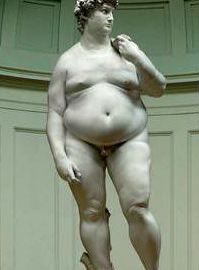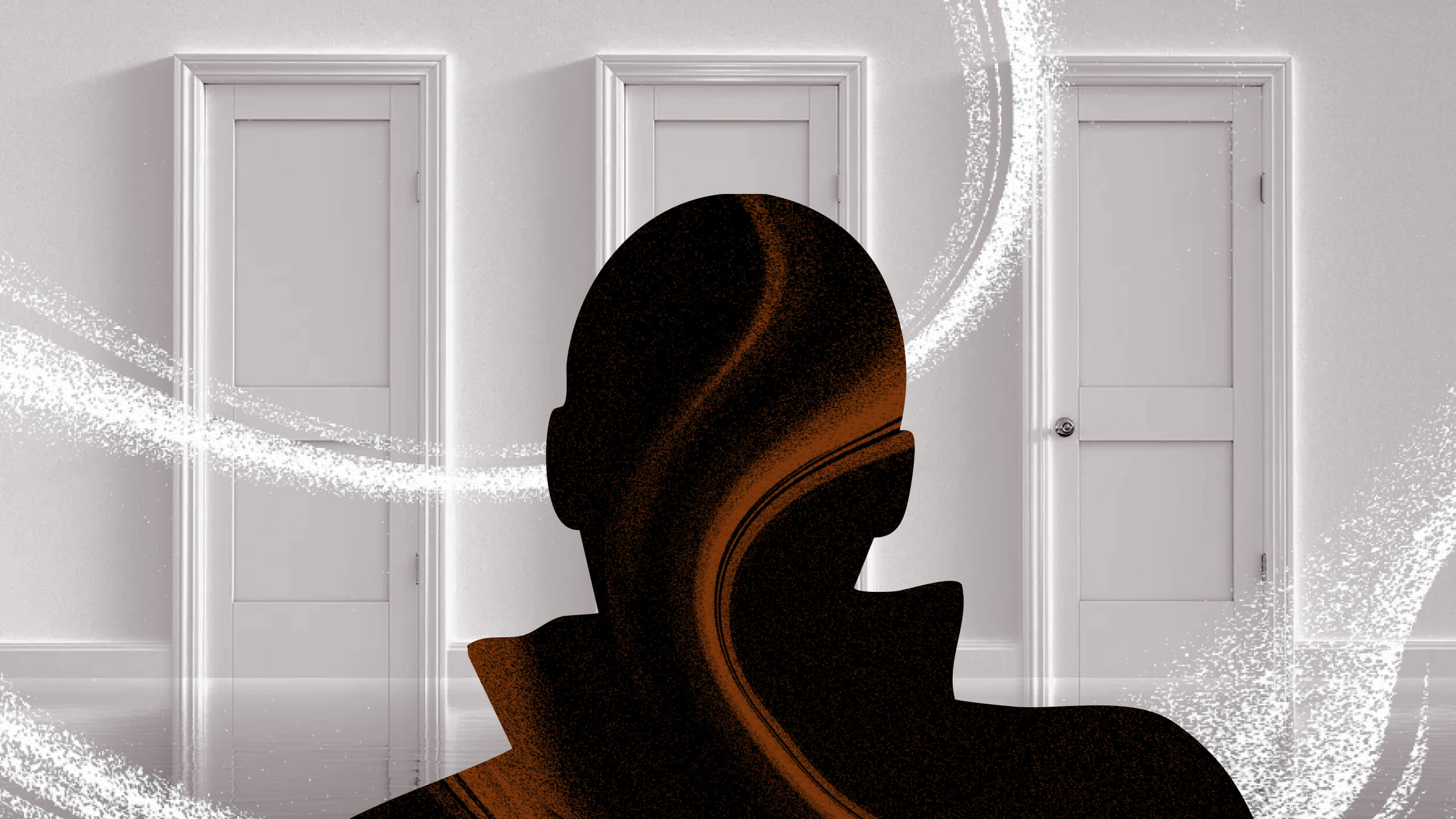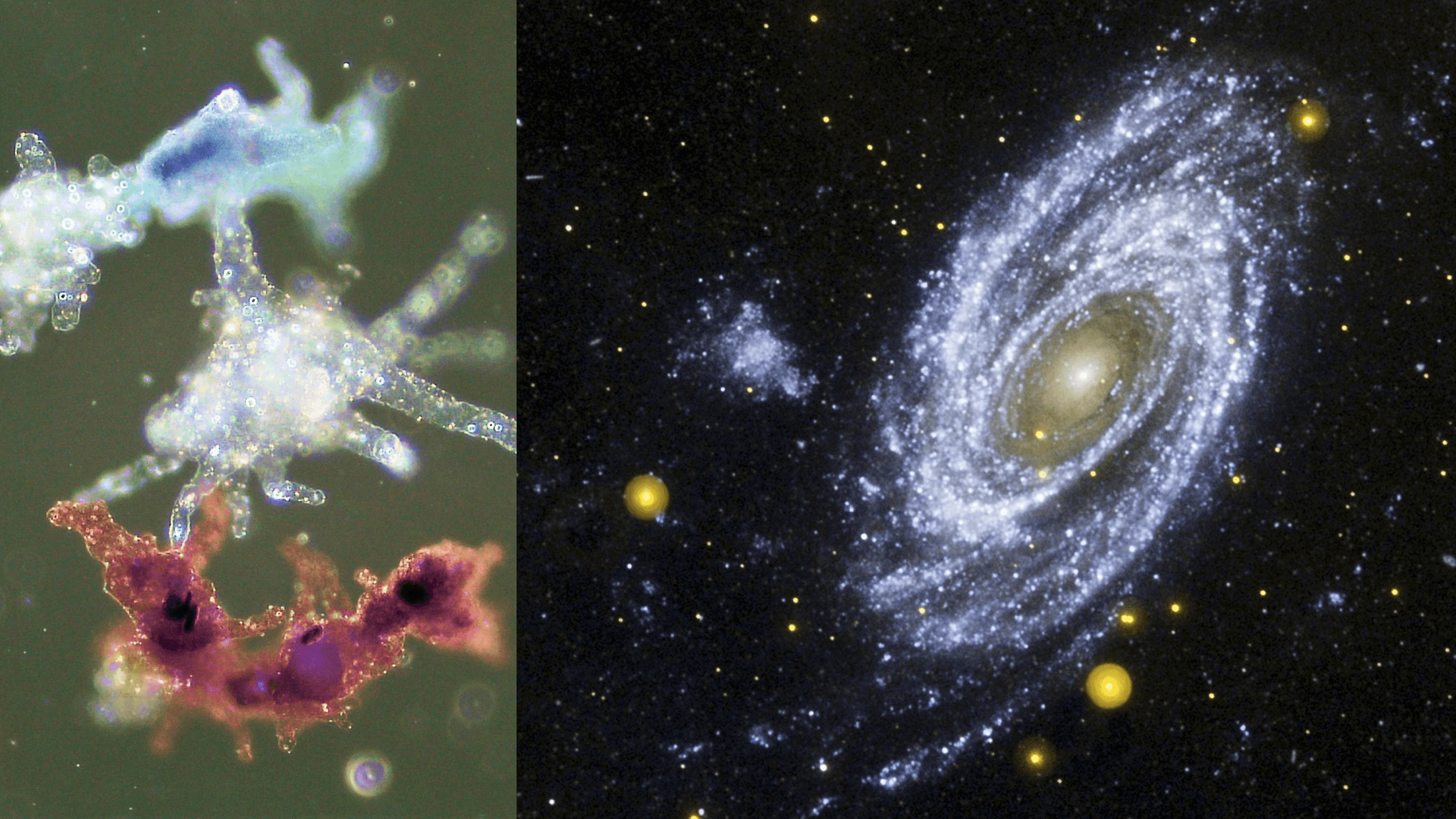Why Are We Fat?

Obesity has been discovered as a national “epidemic.”
People I know who struggle with their weight say they feel as self-conscious today as that smoker who stands exiled outside an office building on a February morning. They feel like walking public service announcements.
As with any other epidemic—a disease that spreads within a population—we seek causes in our culture. We’ve pointed the j’accuse finger at supersized sodas, corn syrup, vending machines, food deserts, brain chemistry, Big Macs, cubicles, genes, carbohydrates, fats, trans-fats, exercise regimens, food labeling, portion size, and, from a more conservative bent, the demise of Individual Personal Responsibility not to woof down a whole bag of potato chips.
These are worthy culprits. But we can add to this extensive list that we’re a fat nation for the simple reason that we hate bodies.
If Michelangelo’s David was the physical expression of a humanist society, then obesity is the physical expression of a post-humanist society.
A post-humanist society is one that doesn’t cherish the two unique qualities that humans have, the qualities of reason, and desire.
Americans are getting the message loud and clear that they shouldn’t be overweight. But what other cultural messages are we getting? And how many of them celebrate the body for its beauty and sensual capacities?
Attitudes about sexuality are only the most obvious examples. Recent research finds that lust and disgust emotions are flip sides of the same genetic coin. If that’s true, our culture has been losing the lust/disgust coin toss for many decades. We always seem to land on the disgust side.
An abstinence program in Georgia illustrates the unmarried, sexually active woman’s body by having students eat cheese crackers and then spit into a drinking glass. The instructor then asks, which glass would you rather drink out of/marry? This gross polluted vessel, or this clean one over here?
But even liberals collude with a macabre, “at-risk” fear of the flesh. While they don’t support abstinence programs, they trip over themselves to agree that young people shouldn’t be sexually active, even though responsible sexual experimentation of some kind in the late teens is a normal and potentially non-pathological stage. France is much more open with teens about sex—and has drastically lower rates of abortion, teen pregnancy, and teen parenthood. Or, as I’ve written, when liberals want to advocate for abortion or birth control, they’re most fond of couching their reasons in terms of “women’s health.” They advocate for abortion by using examples of the most tragic, non-consensual kind (victims of rape or incest).
Maybe it’s the Puritan strain that drives us to struggle against sensual enjoyments of the body, rather than celebrate and manage them, and sets us at odds with our own bodies.
Most of what passes for erotic in popular culture is like what Velveeta is to cheese. Too often we use our bodies to have instrumental (even narcotized or unconscious) sex, intended to manipulate a partner, score points as a male “player,” follow advice book “rules” about how to snag a husband, as if men are prey and sex is bait, or to fulfill a perceived duty.
A fast food view of desire is one part of the anti-humanist soul sickness. There’s also an aesthetic component. True, our culture seems to idolize skinniness. In that sense, we seem to think too muchof thinness, not too little. But the beauty standard that’s idolized is ultimately a self-flagellating delusion, because it’s mostly a photo-shopped, manipulated caricature—not entirely unlike the extreme features and figures cut by our favorite video game characters.
The women displayed in fashion spreads and magazines aren’t so much “real bodies” as artistic renditions that are chiseled out of the photographic raw material of a real body.
For their part, supermodels are valued to the extent that their bodies can emulate a hanger; in other words, to the extent that they can be thin enough that the clean line of the garment isn’t broken by annoying curves and flesh.
You’d think this visual caricature would prod us to be thinner. But its underlying message is so helpless and hostile: Your body betrays you and is your enemy. It’ll never look like this. How could it? That leads to self-loathing which leads in turn to obesity-producing disregard for the body.
Even in medicine, we’re put at odds with our bodies. We fight “battles” against our diseases. A particularly belligerent set of commercials for a Baltimore hospital features patients trash-talking their own flawed organs (“This is a message to my failing kidney. You WILL NOT BE MISSED”).
Or, consider how we clothe the body. Americans are notoriously less appearance-conscious than their peer nations. I don’t mean keeping up with fashion trends, but simply taking some time for personal appearance and style in public, out of self-respect, a love of beauty and charm, and deference to others. Instead we wear sweat pants, flip flops, pajama bottoms, and tee-shirts.
Aliens would think that we were a nation perpetually on its way to the gym, or to bed.
My point is that it’s hard to imagine that we’d have a healthy national weight when our culture powerfully invites us to loathe, disrespect, battle, give up on, or ignore the body in so many other dimensions.
It’s said that obesity can produce self-hatred. But a cultural loathing of the body might also precede obesity, and help cause it.





